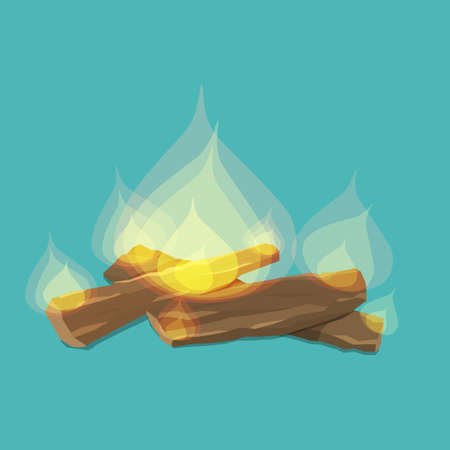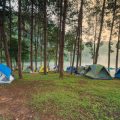Introduction to Survival Food Procurement
When venturing into the wild, knowing how to procure your own food is as vital as having a sturdy tent or a reliable fire starter. Survival camping strips life down to essentials, and food procurement becomes a skill that defines your self-reliance. Whether you’re exploring remote forests, rugged mountains, or tranquil lakesides, understanding how to source food naturally ensures not just your nourishment, but also your safety and confidence. In this journey, we will explore the core practices of foraging, hunting, and fishing—timeless techniques that connect us with nature’s rhythms and help us thrive when resources are scarce. Embracing these skills means respecting the land and learning to live in harmony with it, a true hallmark of survival in the American outdoors.
Foraging Wild Edibles
Foraging is one of the oldest survival skills, essential for food procurement in the wild. In North America, the landscape is rich with edible plants, berries, nuts, and mushrooms—but knowing how to identify safe options is crucial. Mistakes can be dangerous, so always err on the side of caution and use local field guides or consult experts when possible.
Identifying Safe Edibles
Learning which wild foods are native and non-toxic is key. Focus on a few common species you can positively identify. Here’s a basic overview:
| Edible Type | Common Examples (North America) | Key Identification Tips |
|---|---|---|
| Plants | Dandelion, cattail, wild onion | Look for non-hairy leaves; avoid milky sap unless positively identified |
| Berries | Blackberries, blueberries, serviceberries | Avoid white and yellow berries; most blue and black berries are safe but confirm with guidebooks |
| Nuts | Acorns (leached), walnuts, hickory nuts | Avoid bitter taste; leach acorns in water to remove tannins before eating |
| Mushrooms | Morels, chanterelles (advanced only) | Only eat mushrooms you can 100% identify; many lookalikes are toxic |
Local Foraging Tips
- Get Educated: Carry a regional plant identification guidebook or app.
- Start Simple: Focus on widespread species like dandelions or blackberries first.
- Sustainable Harvesting: Take only what you need; leave roots and seeds for regrowth.
- Avoid Contaminated Areas: Don’t forage near roadsides or polluted water sources.
- Test Small Quantities: When trying something new, eat a small amount and wait for any reaction.
Seasonal Awareness
The availability of wild edibles changes with the seasons. Spring offers young greens and shoots, summer brings berries and some nuts, while fall is prime for nuts and mushrooms. Always check local regulations—some areas restrict foraging to protect native habitats.
![]()
3. Small Game and Bird Hunting
Ethical Hunting: Respect for Life
Ethical hunting starts with respect for wildlife and the ecosystem. In survival camping, taking only what you need ensures nature can renew itself. Practice clean, quick kills and avoid waste. Always be mindful of your surroundings, and never target endangered or protected species.
Legal Considerations: Know Before You Go
Before setting out, check local regulations on hunting seasons, bag limits, and weapon restrictions. Most states require a license to hunt small game or birds. Ignorance of the law is not an excuse—responsible hunters prioritize legality and conservation.
Common North American Species
North America offers a range of small game and birds suitable for survival situations. Rabbits, squirrels, grouse, quail, and doves are widespread and provide valuable protein. Learning to identify these species helps ensure you’re harvesting legal game and not harming at-risk populations.
Beginner Techniques with Minimal Gear
For minimal gear hunting, simple tools like slingshots, snares, or a compact .22 rifle are effective for small game. For birds, a basic single-shot shotgun or even improvised traps can work. Focus on patience and stealth—move quietly, watch for signs like tracks or droppings, and set up near food sources or water. Practice with your chosen tool ahead of time so you’re prepared when the opportunity arises.
4. Fishing for Survival
Fishing is a vital survival skill, especially when wild plants and game are scarce. Understanding simple fishing methods, identifying native species, and knowing primitive traps can make the difference between hunger and nourishment in the wild.
Simple Fishing Methods
In a survival scenario, basic techniques work best. Hand-lining requires just a strong line, a hook, and bait—no rod needed. Improvised spears from sharpened sticks or bone tips can help catch fish in shallow waters. Creating makeshift nets using clothing or vines is also effective for scooping up smaller fish.
Native Fish Identification
Knowing which fish are edible and commonly found in different U.S. regions increases your chances of success. Here’s a quick reference:
| Region | Common Native Fish | Key Features |
|---|---|---|
| Northeast | Brook Trout, Smallmouth Bass | Cold streams, rocky bottoms |
| Southeast | Catfish, Bluegill | Muddy rivers, warm lakes |
| Midwest | Northern Pike, Walleye | Larger lakes, slow rivers |
| West | Rainbow Trout, Chinook Salmon | Mountain streams, coastal rivers |
| Southwest | Channel Catfish, Sunfish | Desert rivers, reservoirs |
Primitive Traps and Tools
If you lack fishing gear, try classic traps like funnel-shaped fish baskets or weirs made from rocks and sticks. These channel fish into confined spaces where they can be easily caught by hand or with improvised nets. Fish hooks can be carved from wood or bone; thorns and safety pins also work in a pinch.
Aquatic Environments and Suitable Methods
| Aquatic Environment | Recommended Method | Why It Works |
|---|---|---|
| Lakes & Ponds | Baited hand lines, basket traps | Still water lets bait settle; fish congregate near structure. |
| Rivers & Streams | Spear fishing, rock weirs, drift nets | Current channels fish; shallow spots ideal for spearing. |
| Coastal Areas | Tidal pools netting, shellfish gathering by hand | Tides trap marine life; easy access to crabs and small fish. |
| Wetlands & Swamps | Baited lines for catfish, scoop nets for minnows/frogs | Muddy water hides bait; abundant small aquatic life. |
Simplicity and adaptability are key to survival fishing. Use what you have and respect local ecosystems—take only what you need to thrive.
5. Safe Food Handling and Preparation
Cleanliness Is Key
In the wild, keeping your food clean is essential for survival and health. Always wash foraged plants, berries, or roots with filtered or boiled water to remove dirt and microbes. For fish or game, clean and gut them as soon as possible after catching. Use a sharp knife and work on a clean surface—improvised from smooth stones or bark if necessary. Avoid cross-contamination by keeping raw meat away from edible plants.
Proper Storage Techniques
Storing wild foods safely can be challenging in the outdoors. Keep meat, fish, and perishable plants cool by storing them in shaded areas or submerging them in cold running water (secured in a bag). Hang food away from your campsite to protect it from animals. If possible, dry or smoke fish and meat to preserve them for longer periods—this not only deters spoilage but also conserves energy otherwise spent on repeated hunting or fishing trips.
Efficient Cooking Methods
Cooking not only makes food safer but also easier to digest and more nutritious. Boil wild greens and tubers to neutralize toxins; roast or grill meat and fish over open flames to kill bacteria and parasites. Use minimal water when boiling to retain nutrients. Consider one-pot meals or foil packet cooking over coals—they save fuel and make cleanup easier. Always ensure that all meats are cooked thoroughly; avoid eating raw or undercooked animal products.
Energy Conservation Tips
Fuel is precious in survival camping. Prep all ingredients before lighting your fire to minimize burn time. Batch-cook meals if you have enough supplies, then store leftovers safely for later use. Choose simple recipes that require short cooking times, using local resources like hot stones or embers instead of large campfires.
Maximizing Nutrition
Diversify your wild harvests—combine leafy greens, roots, berries, fish, and game to get a range of nutrients. Retain edible skins when safe, as they often contain fiber and vitamins. Drink broth from boiled bones or plants for minerals and hydration. These best practices help you stay strong, healthy, and alert in the wilderness.
6. Sustainable Practices in the Wild
When sourcing food during survival camping, it’s essential to prioritize sustainability and ethics. Minimizing your impact on the environment is not just a responsible choice—it’s vital for preserving nature for future adventurers. Always research and follow local wildlife regulations before foraging, hunting, or fishing. These rules are designed to protect native species and maintain ecosystem balance.
Integrating Leave No Trace principles into your food procurement routine helps ensure you tread lightly. Only take what you truly need, avoid disturbing habitats, and never harvest threatened or endangered plants and animals. When foraging, pick in moderation to leave enough for wildlife and regrowth. While hunting or fishing, use legal methods and respect seasonal restrictions.
Dispose of any waste properly and avoid introducing non-native species. Clean up thoroughly after processing food, making sure no scraps attract animals or contaminate water sources. By practicing these sustainable habits, you help conserve wild spaces while meeting your survival needs. Ethical food procurement not only sustains you but also honors the land and its living communities.

